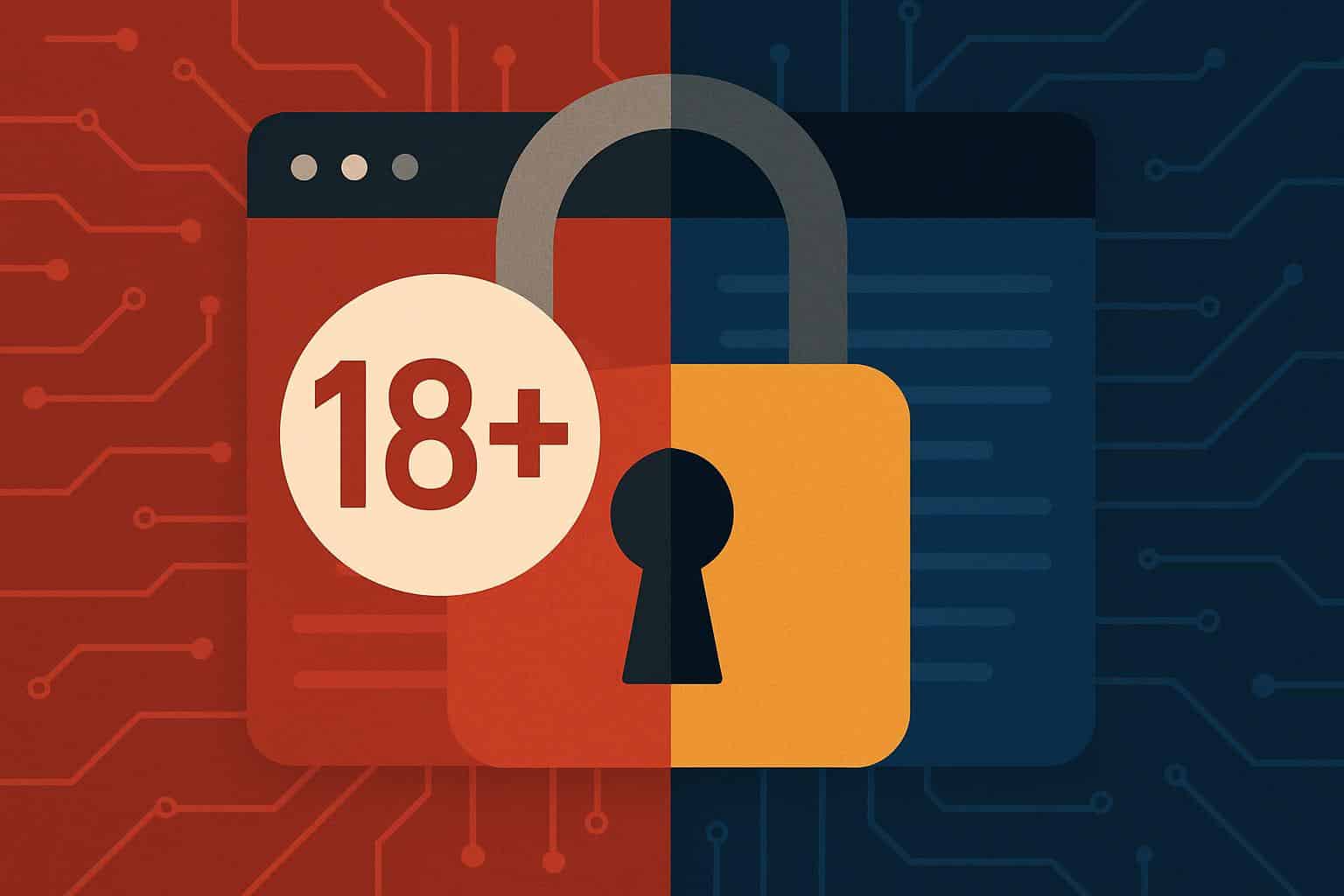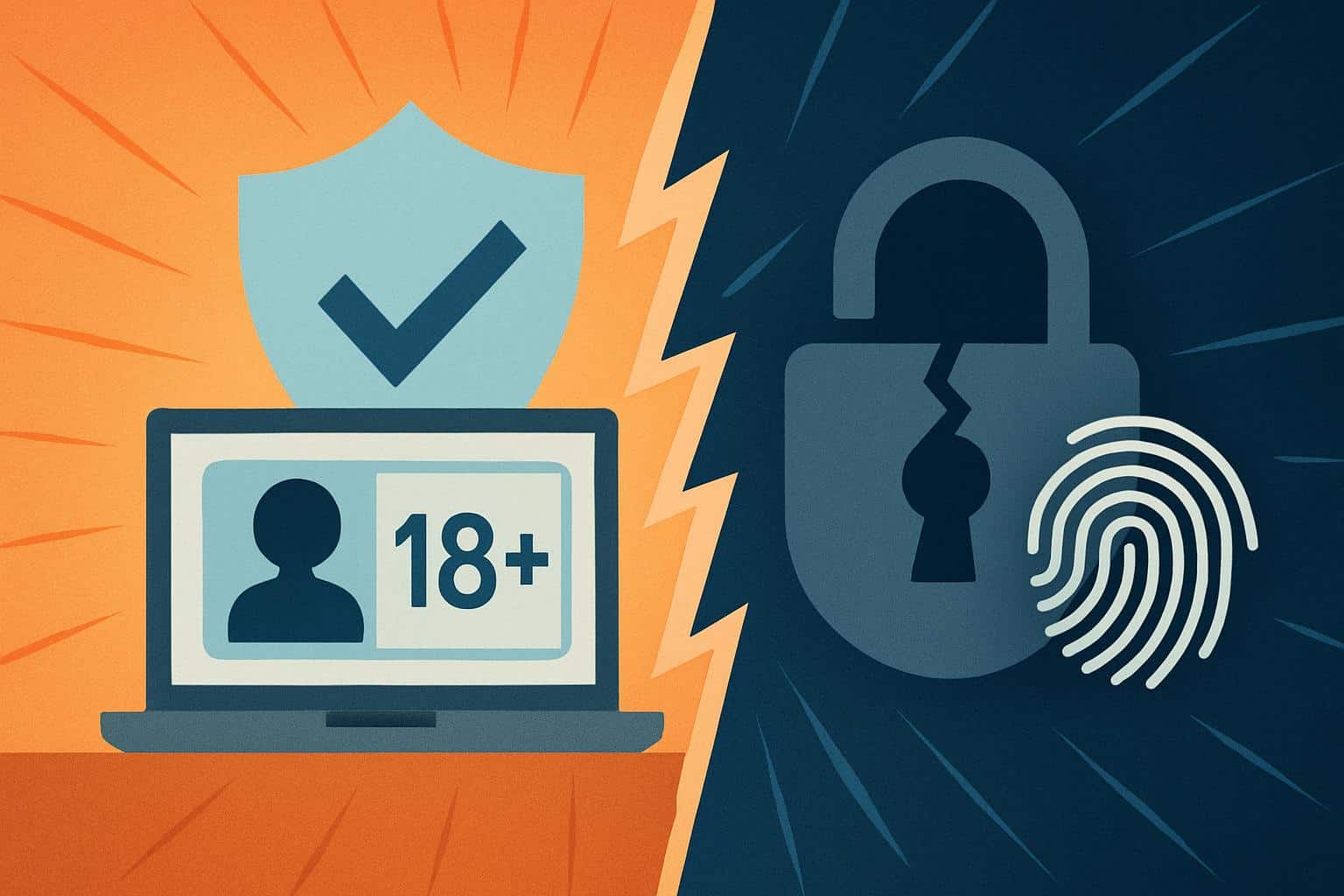From both sides of the Atlantic, governments are pushing to expand age verification requirements across the web, on the grounds that stricter checks would shield minors from pornography, predatory behavior and other high‑risk material. That push has set off a fierce debate: how do you verify someone’s age at scale, without constructing surveillance systems that lay everyone’s identity bare, chill speech, and expand the blast radius of the next data breach?
The stakes are real. Parents, platforms, regulators and civil liberties groups are united in the view that children should have substantive protections online. What they can agree on is that today’s proposed solutions either make kids safer — or just make us all less safe.

Why lawmakers are calling for tougher age checks
Advocates point to mounting harms: Reports of online child exploitation received by the National Center for Missing & Exploited Children have now reached the tens of millions per year; families have testified that drug deals have been brokered on social apps; and lawsuits have been filed claiming that AI chatbots have been used to have inappropriate conversations with children. There’s a mood for action in the public, and for lawmakers gating adult content and high‑risk products behind age checks offers a compromise that might just work.
Advocates also point to lessens learned from platform design. Britain’s Information Commissioner’s Office has pressed services to use age‑appropriate design and put privacy‑by‑default settings for younger ones. Age verification, they say, is the enforcement spine that gives those standards bite.
What counts as verification — and where it falls short
Today’s systems are far more sophisticated than the old “I am over 13” check box. Typical means may include scanning a government ID, capturing a live selfie for facial age estimation, evaluating credit or mobile carrier records, or accepting a third party attestation wallet. Some of the vendors promise that the processing and deletion happen on the device; others, especially those narrow artificial intelligence vendors, depend on cloud services and data brokers.
Security experts caution that each strategy involves trade‑offs. “There’s no design that achieves both high accuracy and deep privacy preservation,” says the Electronic Frontier Foundation. Biometric scans can make an erroneous match; ID uploads create honeypots; credit checks exclude the unbanked; and parental consent flows are famously loose to spoof.
What’s more, even the strongest technical standards—like those published by NIST or organizations like W3C for verifiable credentials—need to be implemented in a privacy protective way, with as little data collection as possible and tight limits on retention. The fine line between safe and dangerous” is usually in the plumbing, not the pitch deck.
A patchwork in the U.S.
Over twenty U.S. states have imposed age verification laws, and more are on the way. For most target sites holding a determinate quantity of material “harmful to minors” (a degree that differs by state). In reality, adult platforms are ID checking, and mainstream social apps are under scrutiny to verify ages for things like direct messaging and live streaming.
The result is a tangle of compliance. Some platforms have blocked access in states with stringent rules, like Pornhub, which has cited data‑breach risk and legal ambiguity. Industry groups like NetChoice have brought challenges that claim laws violate the First Amendment and force data collection; some of those challenges have prevailed, while others have not, resulting in the patchwork growing more complicated.
Civil rights advocates say that expansive definitions of “harmful sexual content” could be weaponized against LGBTQ resources and comprehensive sex education, which are lawful and often life-saving. Lawmakers say those fears are overblown; precedent indicates that the wording is more important than the intent.
The UK’s sprawling test case
The U.K.’s Online Safety Act, for example, would require a variety of services — social media, search, video platforms, messaging tools, even some cloud storage — to make its best effort to determine a user’s age and to limit the possibility of minors from experiencing certain types of content. Ofcom enforces the rules but lets providers decide how to enforce them, whether by facial estimation or third‑party age‑assurance services.

Early implementation has produced friction. Users complained of being asked for IDs to view sexually explicit but educational or newsworthy content. Consumer groups, including the Open Rights Group, argue the law encourages over‑blocking and normalizes ID checks for mundane browsing.
Security, breaches and unintended harm
Data security is the weak point. At a time when “verification” involves submitting a driver’s license and a selfie, one breach can reveal names, birthdates, faces and addresses — the perfect kindling for identity theft and stalking. Recent breaches related to third‑party tools have leaked exactly that kind of data, despite assurances of “we don’t store images.”
The overall breach picture is grim. Giant hacks like the MOVEit bug exposed driver’s license data on individuals from several state agencies, exposing that even regulated custodians have difficulty safeguarding coveted IDs. And also because adding millions of new copies to private vendors means widening the attack surface.
There’s also a speech cost. Anonymity is a shroud that protects dissidents, whistleblowers and survivors of abuse. If casual browsing is linked to one’s real‑world ID, most will self‑censor—particularly in jurisdictions where medical, political or sexual speech is disputed.
Platforms, VPNs and the cat-and-mouse
Users adapt. Following access blocks in several areas, VPNs shot to the top of app‑store charts. A major adult site blocked in France results in 10x user spike in minutes for ProtonVPN. This pattern repeats: When platforms hard‑block a state or a country, circumvention tools grow in number — and many “free” VPNs commit their own privacy infractions.
Big platforms, meanwhile, are experimenting with softer approaches, including behavior‑based age estimation and device‑level signals. Such methods minimize friction but also introduce new issues of profiling and false-positive outcomes, especially for adults with atypical usage.
Toward safer, privacy‑first solutions
There is a continuum, in other words, that runs from doing absolutely nothing to demanding IDs at the door. Analysts cite layers of protection: stronger default privacy and safety settings for minors; restrictions on algorithmic amplification and direct messaging; increased content labels; independent audits of risk mitigations, such as the UK ICO and European Union regulators have advocated.
Privacy‑preserving tools hold promise on the identity side. Facial age estimation on‑device that would never be uploaded, zero‑knowledge proof‑based “over 18” checks that wouldn’t give away your birthdate and reusable credentials trusted entities issue you are some of the ways for us to reduce the sprawl of all this data. But those tools do need to also be voluntary, and interoperable, and be governed by strict retention and redress rules.
The policy choice at the heart of the issue is clear: Go after risky features and business practices, or require an identity check everywhere. Now that more jurisdictions are forging ahead, we’ll see the evidence from the early adopters about whether these sweeping age verification curbs hurt — or just shift it from kids to everyone’s privacy.

